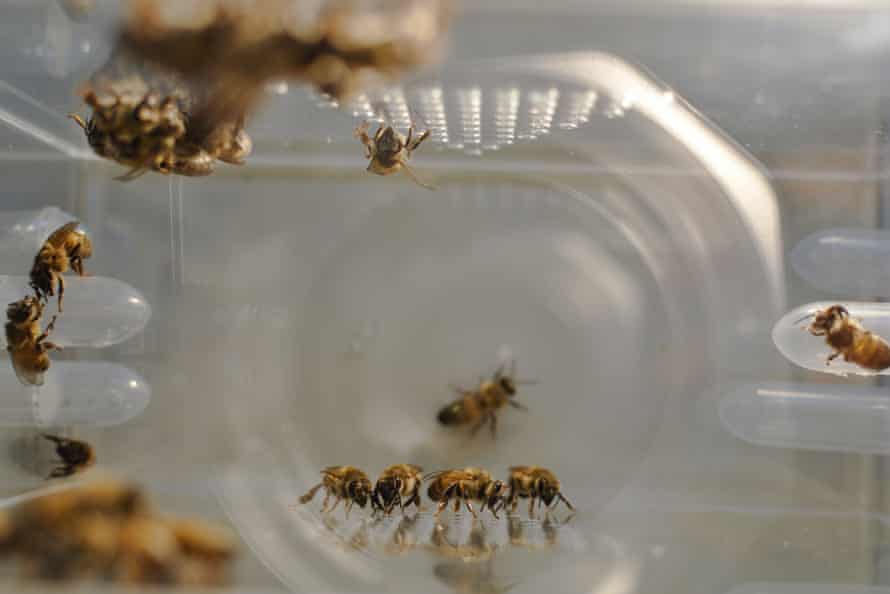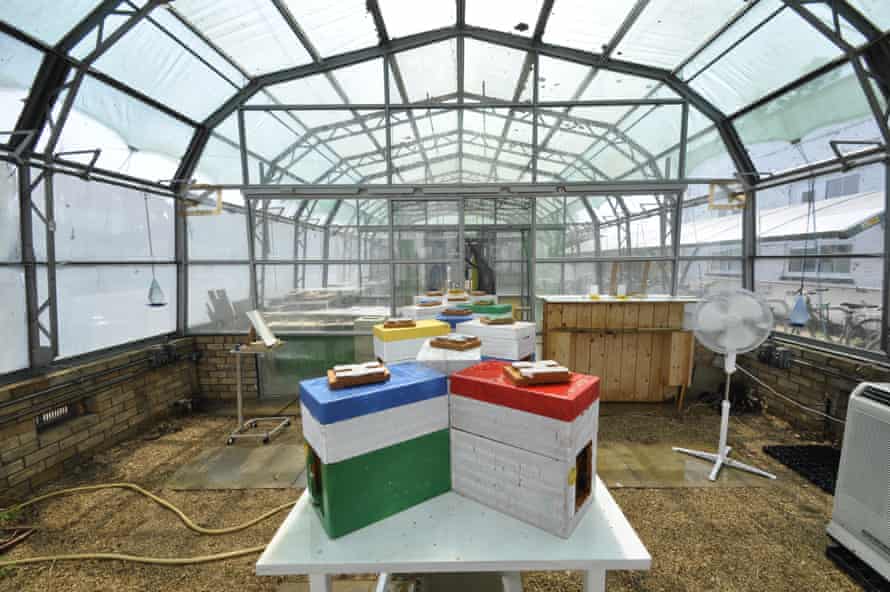When beekeepers from across the US drive thousands and thousands of hives on vans to pollinate California’s almond crops in January, there simply isn’t more than enough food for them to consume right until the million-furthermore acres of almond trees start to bloom in early spring.
California’s booming almond field has designed a huge monoculture, with small pure forage. The honeybees require to be in spot to elevate their broods prior to the pollen will come into season, forcing beekeepers to use pollen patty substitutes to continue to keep them alive.
Following finding out the honeybees made use of to pollinate almond trees for numerous several years, Prof Geraldine Wright, a biologist at the University of Oxford, realised that except if this pollen substitute was basically tailor-made to the distinct dietary requires of a honeybee colony, colonies can are unsuccessful altogether.
“Nobody had performed a truly careful examine of bee nutrition and the characteristics of pollen,” claims Wright, who has expended the earlier decade engineering a new bee food based on her information of the intricacies of the honeybee diet.
As pollinators, honeybees are elementary to foods programs and are deemed a domesticated species. In that vein, Wright suggests they will need their personal bespoke feed.
Right until now, pollen substitutes have been “a little substandard”, consisting of a blend of flour, sugar and unwanted fat that “looks like gloopy cookie dough”, Wright claims. Livestock feed providers have not invested seriously in manufacturing the best bee foods, most likely mainly because honeybees are smaller and only depict a portion of the market share when compared with cows, pigs and sheep.

Domesticated honeybees face comparable problems to any farmed animals, this kind of as illness, but this is compounded by threats such as pesticide use, the weather disaster and decline of habitat. More than a single-fifth of colonies ended up lost around the winter season of 2019–2020 due to a variety of things, like pathogens, pesticides and bad nutrition.
In the subject, honeybees obtain nectar that is transformed into honey and pollen which they convert into bee bread (a combination of plant pollen and honey) that can be stored in the hive for afterwards use. But with lowering natural forage available, beekeepers check out to sustain their colonies using food items that rely significantly less on the landscape. Beekeepers can use a pollen substitute, consider to discover some other normal forage for their bees or obtain honeybee-gathered pollen from abroad – but that can vector disorder.
When you’re striving to domesticate an animal, Wright says, you want to present it with an exceptional food items supply: “In the springtime it may be much easier for honeybees to accumulate tons of distinctive styles of pollen so they possibly get a very good sufficient mix of vitamins and minerals, but in the autumn the food is considerably far more limited to individual flowers and there is considerably less of it so the colony has to adapt to the modifying nutritional landscape.”
In her research lab, Wright rears thousands of worker bees from Might through to September. Four massive incubators every incorporate 100 Perspex boxes with standardised problems. In each individual box, 40 worker bees of the identical age are supplied unique fat-protein combos to feed on. That is weighed regularly to watch which foodstuff options they decide on. Wright assesses how prolonged they survive to determine the the best possible combinations of vitamins and refine her recipe for the pollen substitute.

Although employee bees favour carbs to fuel their flight, nurse bees have to have far more fat and protein to make the royal jelly and feed the larvae. The extent to which honeybees may well go out of harmony when their diet program alterations intrigues Wright, so she’s also studying mini honeybee colonies inside of an enclosed glass household to evaluate how different foodstuff impact brood creation.
Bee nutrition is advanced and dynamic. Wright claims that dietary needs may well count on the time of yr or geographical location. “We’re wanting at how seasonal variants in bee meals could transform the biology of the complete colony, moreover we’re finding out bees from across Europe and the US to investigate how community flora has an effect on their nutrition,” she states.
Josette Lewis, chief scientific officer for the Almond Board of California, says health supplements are “particularly essential through the wintertime months when there is tiny pollen accessible in the landscape”, but that farmers are doing work to “improve bee nutrition by planting on-farm pollinator habitat”.
As very well as a supplementary feed for bees, Wright’s group are establishing a honey substitute. “Honey is a valuable crop, particularly in the British isles and Europe, but when beekeepers acquire honey from the bees in the summertime to market, the bees will need to be given an extra sugary foodstuff supply.” She states that the bees set a whole lot of “the good stuff” into the nutrient-dense honey by themselves, so when honey is harvested, beekeepers are eradicating a dietary useful resource from the hive.
“If we can create a food stuff for the bees that is valuable but a lot less highly-priced than honey, then it results in being economically sensible to do that,” states Wright.

Chris Hiatt, vice-president of the American Honey Producers Affiliation, welcomes Wright’s modern bee meals, declaring it is important for maintaining bees healthy and minimizing losses to ailment. “If we didn’t feed 5–10 lbs . of pollen every single winter season, we would eliminate extra than the 40% national common we do now.”
When she gets financial investment, Wright’s new bee foods will be marketed to beekeepers around the environment. When farmers in some areas might have plentiful pollen, potential marketplaces include Australia, as very well as areas farming cranberries and blueberries in North America.
Signal up for the Animals farmed month to month update to get a roundup of the very best farming and food stuff stories throughout the world and maintain up with our investigations. You can mail us your tales and views at [email protected]

More Stories
Dentists in Stamford CT Are Growing Concerned About the Lack of Adequate Dental Health Care Coverage
Top 5 Tips For Dental Care
Dental Care – Types of Dentists